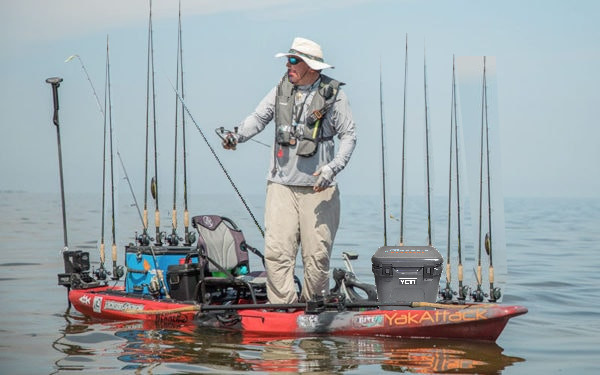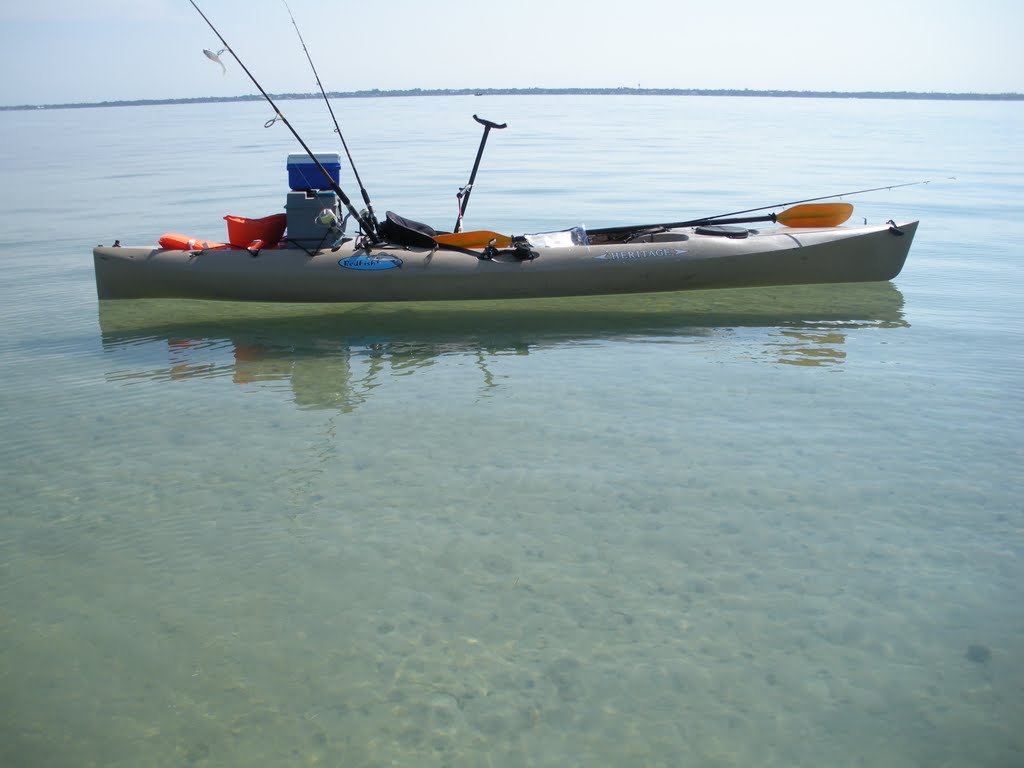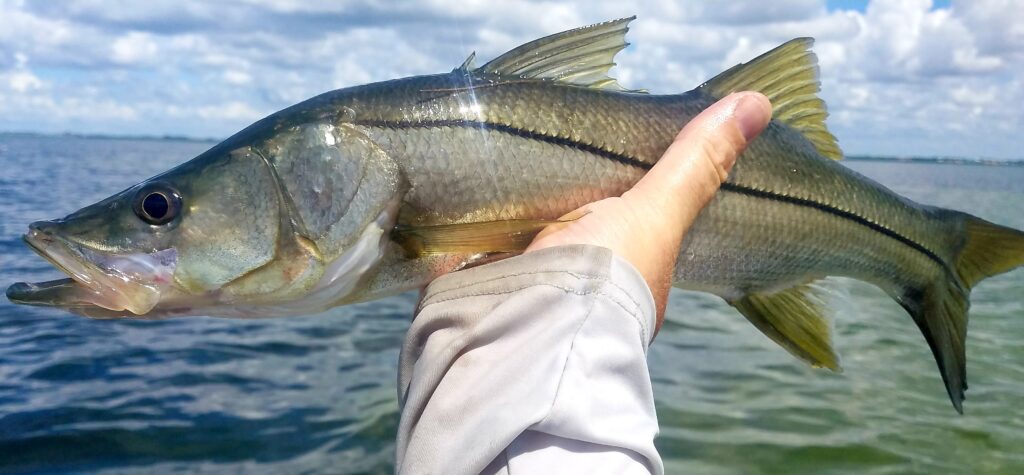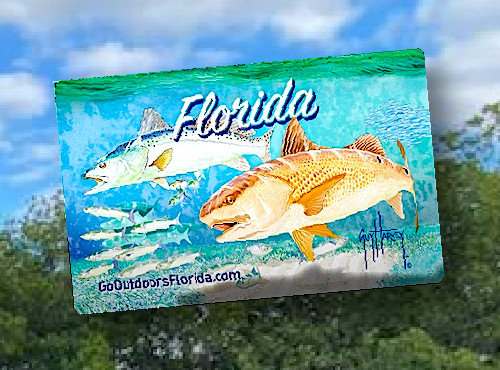Introduction: The Spotted Seatrout
Scientifically known as Cynoscion nebulosus, is a highly sought-after game fish that captivates anglers with its distinctive appearance and thrilling fights. In this article, we delve into the captivating life cycle of the Spotted Seatrout, exploring how various factors such as food, weather, seasons, environment, and geographical areas influence its behavior. Join us as we unravel the secrets of this remarkable game fish.

1. Overview and Identification:
The Spotted Seatrout, commonly referred to as “speckled trout” or “specks,” is a medium-sized fish characterized by a sleek body and prominent black spots on its back, sides, and fins. It has a silvery-gray coloration, with a distinctive elongated mouth equipped with sharp teeth. These features make it easily recognizable and a prized catch among anglers.
2. Life Cycle:
The life cycle of the Spotted Seatrout begins with the spawning season, which typically occurs during the spring and summer months. Female seatrout release their eggs near coastal estuaries, where they are fertilized by male seatrout. The fertilized eggs then hatch into larvae, which spend several weeks drifting in the water column before transforming into juveniles. As they grow, they move into shallow, protected areas, such as seagrass beds or marshes, where they find ample food and cover. Over the next few years, the seatrout undergoes significant growth, eventually reaching maturity and joining the adult population.
3. Food and Feeding Habits:
Spotted Seatrout are opportunistic predators, known to feed on a variety of prey. Their diet primarily consists of small fish, shrimp, crabs, and other invertebrates found in their habitat. They are ambush predators, using their camouflage and sharp vision to target prey. Seatrout are known to feed both during the day and night, with their feeding patterns influenced by factors such as tidal movements and prey availability.
4. Weather and Seasonal Influences:
Weather conditions and seasonal variations play a crucial role in the behavior of Spotted Seatrout. These fish are highly sensitive to changes in water temperature and often seek out areas with optimal conditions. During colder months, seatrout tend to move to deeper, warmer waters, while in warmer seasons, they may venture into shallower areas and along the edges of grass flats. Moreover, changes in barometric pressure and weather fronts can trigger feeding frenzies or periods of reduced activity among seatrout.
5. Environmental Factors:
The Spotted Seatrout is strongly influenced by environmental factors. They prefer estuarine and nearshore habitats with seagrass beds, oyster reefs, and sandy bottoms. Water temperature, salinity levels, and water quality are crucial for their survival and growth. They are particularly sensitive to changes in water clarity and oxygen levels, which can impact their behavior and movement patterns. Healthy estuarine ecosystems are vital for maintaining robust populations of Spotted Seatrout.
Understanding the specific measurements and data associated with salinity, water quality, and temperature helps elucidate the impacts on this species.
1. Salinity Levels:
Spotted Seatrout exhibit a preference for estuarine and nearshore habitats that offer a balance of freshwater inflows and marine influences. They are euryhaline, meaning they can tolerate a wide range of salinity levels. However, they have a preference for brackish waters, where salinity levels typically range between 5 to 30 parts per thousand (ppt).
- – Lower Salinity: Spotted Seatrout can tolerate lower salinity levels, such as those found in freshwater-influenced areas or near river mouths. However, excessively low salinity can adversely affect their osmoregulation and overall physiological functioning.
- – Optimal Salinity: Moderate salinity levels between 10 to 20 ppt are considered ideal for Spotted Seatrout. These levels provide suitable conditions for their feeding, growth, and reproduction. Estuarine systems that maintain a mix of freshwater and marine influences often offer such optimal salinity ranges.
- – Higher Salinity: Spotted Seatrout can tolerate higher salinity levels found in more marine environments. However, prolonged exposure to higher salinity can lead to physiological stress and negatively impact their health and behavior.
2. Water Quality and Clarity:
Water quality, including clarity, dissolved oxygen levels, and nutrient content, significantly affects the behavior and distribution of Spotted Seatrout. Changes in water quality parameters can alter their feeding patterns, migration, and habitat selection.
- – Water Clarity: Spotted Seatrout rely on visual cues to locate prey, and water clarity plays a vital role in their hunting success. Clearer water enhances their visual range, allowing them to spot and ambush prey effectively. Turbid or murky water can reduce visibility and limit their feeding efficiency.
- – Dissolved Oxygen: Spotted Seatrout require well-oxygenated waters to support their metabolic needs. Oxygen levels below 2-3 milligrams per liter (mg/L) can be stressful and impact their growth and behavior. Adequate dissolved oxygen is particularly crucial during warmer months or in areas with high organic matter decomposition.
- – Nutrient Content: Estuarine ecosystems, rich in nutrients, support a diverse food web and provide ample prey for Spotted Seatrout. Nutrient inputs from freshwater inflows or organic matter runoff can enhance productivity and attract baitfish, which in turn draw seatrout to these areas.
3. Water Temperature:
Water temperature is a critical environmental factor that influences the behavior, growth, and metabolism of Spotted Seatrout. The species displays preferences for specific temperature ranges throughout their life stages.
- – Thermal Preferences: Spotted Seatrout thrive in water temperatures ranging from approximately 60 to 75 degrees Fahrenheit (15 to 24 degrees Celsius). Within this range, they exhibit optimal metabolic rates, feeding activity, and growth.
- – Seasonal Variations: During colder months, Spotted Seatrout seek warmer waters in deeper channels or nearshore structures that provide thermal refuge. In contrast, during warmer seasons in their northern range, they tend to inhabit shallower areas where water temperatures hang around their sweet spot. In their southern and subtropical range specks will find refuge in the cooler trenches and holes looking for more oxygen.
Understanding the specific measurements associated with salinity, water quality, and temperature provides valuable insights into the preferred habitats and behavioral patterns of Spotted Seatrout. However, it’s important to note that these preferences can vary depending on regional and local conditions. Monitoring these environmental parameters and ensuring the maintenance of healthy estuarine ecosystems are vital for the conservation and sustainable management of Spotted Seatrout populations.
6. Geographical Distribution:
The Spotted Seatrout is predominantly found along the Atlantic coast of the United States, ranging from the Chesapeake Bay down to the Gulf of Mexico. It is also present in the coastal waters of Mexico and the Caribbean. Within its range, seatrout are commonly found in bays, tidal creeks, and shallow coastal areas that provide suitable habitats for their various life stages. Popular fishing destinations for Spotted Seatrout include the flats of Florida, the marshes of Louisiana, and the estuaries of North Carolina.
7. Seasonal Population Movements:
The Spotted Seatrout, Cynoscion nebulosus, exhibits seasonal population movements driven by various environmental factors. Understanding these movements can help anglers locate prime fishing spots throughout the year. Several key factors influence the distribution and abundance of Spotted Seatrout, including water depths, bottom types, salinity levels, food availability, and other environmental parameters.
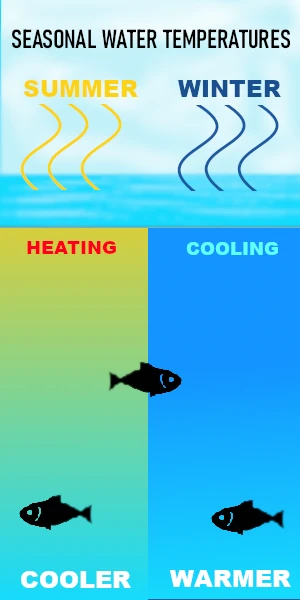
a. Winter (December to February):
During the winter months, Spotted Seatrout tend to seek out deeper waters where temperatures are relatively stable. They often move to channels, deeper holes, or nearshore structures such as jetties, piers, and artificial reefs. These areas provide both thermal refuge and access to food sources. Seatrout are particularly drawn to areas with seagrass beds, as they provide cover and support a diverse array of prey species.
b. Spring (March to May):
As water temperatures begin to rise in the spring, Spotted Seatrout become more active and start moving into shallower areas. They are commonly found in estuaries, flats, and backwater marshes during this time. Seagrass beds, oyster bars, and tidal creeks are particularly productive habitats that offer food sources and protection. In areas with strong tidal movements, seatrout often gather near grass edges or drop-offs, where they can take advantage of the tidal flow to ambush prey.
c. Summer (June to August):
During the summer months, Spotted Seatrout tend to spread out in search of cooler water temperatures and areas with higher oxygen levels. They may move towards deeper channels, deeper portions of bays, or nearshore structures where water circulation is more favorable. However, seatrout can still be found in shallower areas during early morning or late evening when water temperatures are relatively cooler. Structure-rich habitats, such as rock jetties, bridge pilings, and submerged vegetation, provide shelter and attract prey, making them prime locations for targeting seatrout.
d. Fall (September to November):
As the water begins to cool down in the fall, Spotted Seatrout start their migration back towards shallower waters. They move into creeks, river mouths, and along the edges of grass flats. During this time, seatrout actively feed, preparing for the winter months ahead. Shallow flats adjacent to deeper channels or drop-offs are often productive fishing grounds as seatrout patrol these areas in search of baitfish and other prey.
It’s important to note that the specific locations where Spotted Seatrout can be found each month may vary based on geographical region, local habitat characteristics, and water conditions. Factors such as water depths, bottom types, salinity levels, and food availability play a significant role in determining their movements.
To maximize your chances of locating Spotted Seatrout throughout the year, consider the following:
- Study local tide charts and plan your fishing trips around incoming or outgoing tides, as seatrout often position themselves in areas with increased water movement.
- Focus on areas with seagrass beds, oyster bars, and other structures that offer cover and attract prey.
- Pay attention to water temperatures, as Spotted Seatrout prefer areas with suitable thermal conditions for their specific life stages.
- Stay informed about local regulations and any seasonal fishing closures or restrictions that may be in place to protect spawning aggregations.
By combining these insights with local knowledge, angling experience, and adaptability, you can increase your chances of finding productive Spotted Seatrout fishing spots throughout the year. Remember to respect fishing regulations, practice responsible catch-and-release, and contribute to the long-term conservation of this magnificent game fish species.
Conclusion:
Understanding the intricate relationship between the life cycle of the Spotted Seatrout and the various factors that influence its behavior is crucial for successful fishing and conservation efforts. By comprehending their feeding habits, response to weather changes, and habitat preferences, anglers can increase their chances of encountering this prized game fish. Let us continue to explore the captivating world of Cynoscion nebulosus, respecting their habitats and contributing to the sustainable management of this remarkable species.
Sources & Citations
Spotted seatrout. Florida Fish And Wildlife Conservation Commission. (n.d.). https://myfwc.com/wildlifehabitats/profiles/saltwater/drums/spotted-seatrout/
Nehemiah, S., Chagaris, D., Lowerre‐Barbieri, S., & Allen, M. (2022). Environmental factors and stock abundance influence year‐class strength of spotted seatrout at Cedar Key, Florida. Marine and Coastal Fisheries, 14(2). https://doi.org/10.1002/mcf2.10201
Sciaenops ocellatus, commonly known as the Red Drum or Redfish

